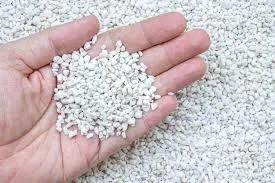Sep . 07, 2024 16:32 Back to list
Lightweight Concrete Aggregates - Enhancing Construction Efficiency
Lightweight concrete aggregates are becoming increasingly popular in the construction industry due to their numerous advantages over traditional aggregates. These specialized aggregates, which are lighter in nature, play a crucial role in creating a variety of concrete products that meet both structural and aesthetic needs.
One of the primary benefits of using lightweight aggregates is the reduction in the overall weight of concrete structures. Traditional concrete is dense and heavy, which can result in increased dead loads on building foundations. By incorporating lightweight aggregates, such as expanded clay, shale, or pumice, engineers can significantly decrease the weight of concrete, allowing for more innovative and flexible architectural designs. This is particularly beneficial in high-rise buildings and bridges, where reducing weight can lead to savings in materials and construction costs.
Furthermore, lightweight concrete aggregates offer excellent insulation properties. The porous nature of these aggregates enhances the thermal performance of concrete, making it more energy-efficient. Buildings constructed with lightweight concrete tend to have lower energy requirements for heating and cooling, contributing to sustainability and reducing overall operational costs. This aspect is particularly important in today’s construction climate, where energy efficiency and environmental consciousness are at the forefront of architectural design.
In addition to thermal efficiency, lightweight aggregates also provide improved workability and ease of handling during the construction process. The reduced weight allows for easier transportation and placement on site, which can lead to faster construction timelines. Contractors often prefer lightweight concrete in precast applications, where reduced weight can simplify lifting and handling operations. This aspect can enhance overall project efficiency, reducing labor costs and downtime.
lightweight concrete aggregates

Moreover, the use of lightweight concrete aggregates can also contribute positively to sustainability initiatives. Many lightweight aggregates are produced from natural, renewable, or recycled materials, such as agricultural byproducts like expanded perlite or rubber tire crumbs. By utilizing these materials, the construction industry can minimize its environmental impact and promote the use of sustainable practices.
However, it’s important to note that while lightweight concrete aggregates provide many advantages, they also require careful consideration regarding mix design and structural performance. The mechanical properties of lightweight concrete can differ significantly from traditional concrete, necessitating advanced engineering techniques and quality control measures to ensure that the final product meets desired specifications and performance criteria.
In conclusion, lightweight concrete aggregates are transforming the construction industry by offering a range of benefits, including reduced weight, improved insulation, enhanced workability, and sustainable practices. As architects and engineers continue to push the boundaries of design and construction, the demand for lightweight concrete will likely increase, leading to new innovations and applications in the field. Embracing lightweight concrete aggregates is not only a step toward more efficient and sustainable building practices but also a move towards a more resilient and adaptable infrastructure that can meet the challenges of the modern world.
-
Eco-Friendly Granule Covering Agent | Dust & Caking Control
NewsAug.06,2025
-
Fe-C Composite Pellets for BOF: High-Efficiency & Cost-Saving
NewsAug.05,2025
-
Premium Tundish Covering Agents Exporters | High Purity
NewsAug.04,2025
-
Fe-C Composite Pellets for BOF | Efficient & Economical
NewsAug.03,2025
-
Top Tundish Covering Agent Exporters | Premium Quality Solutions
NewsAug.02,2025
-
First Bauxite Exporters | AI-Optimized Supply
NewsAug.01,2025
